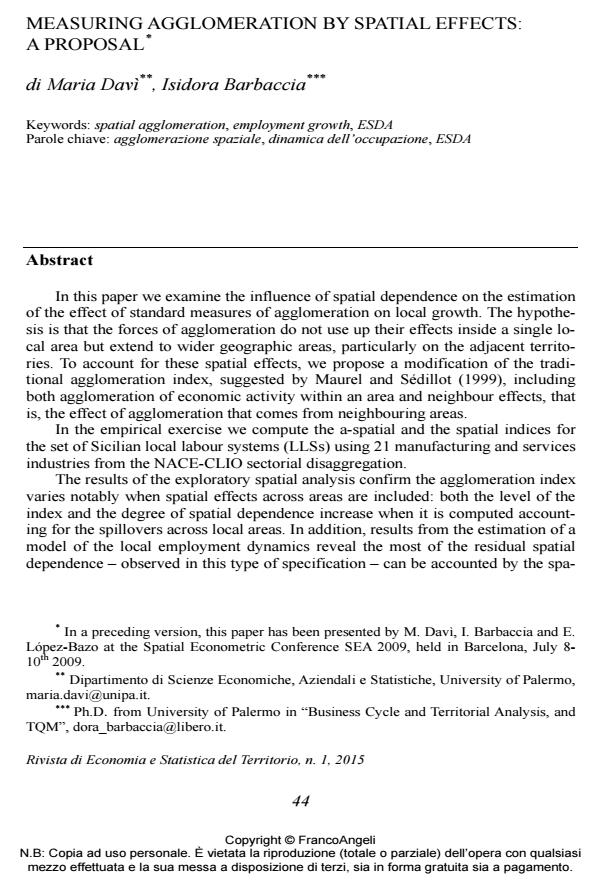Measuring agglomeration by spatial effects: a proposal
Journal title RIVISTA DI ECONOMIA E STATISTICA DEL TERRITORIO
Author/s Maria Davì, Isidora Barbaccia
Publishing Year 2015 Issue 2015/1
Language English Pages 27 P. 44-70 File size 568 KB
DOI 10.3280/REST2015-001002
DOI is like a bar code for intellectual property: to have more infomation
click here
Below, you can see the article first page
If you want to buy this article in PDF format, you can do it, following the instructions to buy download credits

FrancoAngeli is member of Publishers International Linking Association, Inc (PILA), a not-for-profit association which run the CrossRef service enabling links to and from online scholarly content.
In this paper we examine the influence of spatial dependence on the estimation of the effect of standard measures of agglomeration on local growth. The hypothesis is that the forces of agglomeration do not use up their effects inside a single local area but extend to wider geographic areas, particularly on the adjacent territories. To account for these spatial effects, we propose a modification of the traditional agglomeration index, suggested by Maurel and Sédillot (1999), including both agglomeration of economic activity within an area and neighbour effects, that is, the effect of agglomeration that comes from neighbouring areas. In the empirical exercise we compute the a-spatial and the spatial indices for the set of Sicilian local labour systems (LLSs) using 21 manufacturing and services industries from the NACE-CLIO sectorial disaggregation. The results of the exploratory spatial analysis confirm the agglomeration index varies notably when spatial effects across areas are included: both the level of the index and the degree of spatial dependence increase when it is computed accounting for the spillovers across local areas. In addition, results from the estimation of a model of the local employment dynamics reveal the most of the residual spatial dependence - observed in this type of specification - can be accounted by the spa
Keywords: Spatial agglomeration, employment growth, ESDA
Jel codes: R12, C31, J21
Maria Davì, Isidora Barbaccia, Measuring agglomeration by spatial effects: a proposal in "RIVISTA DI ECONOMIA E STATISTICA DEL TERRITORIO" 1/2015, pp 44-70, DOI: 10.3280/REST2015-001002